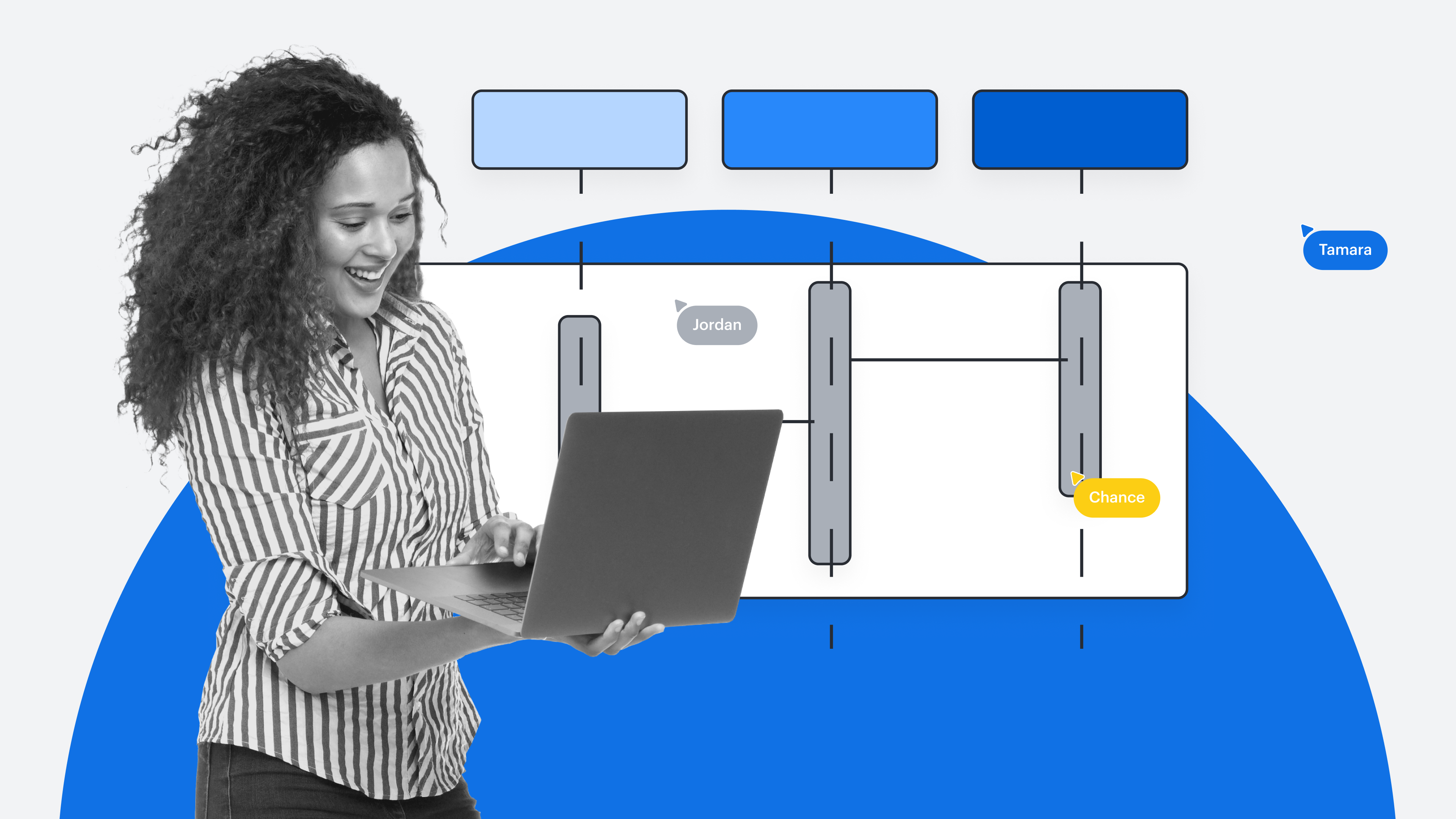
The most important workplace collaboration skills today (with tips and courses to improve)
Reading time: about 12 min
Topics:
Collaboration makes the workplace go round. Yet most people are never taught how to collaborate well (or at all).
In a recent survey commissioned by Lucid, only 37% of respondents reported that their org has provided training around hybrid collaboration and facilitation. Given the business impact of collaboration, that number is shockingly low.
Sure, we may have been able to scrape by without collaboration skills training in the past, where communication was almost exclusively in-person and there were far fewer tools in the tech stack to learn.
But collaboration today is much more complex: Modern-day teams have to collaborate across time zones and locations, adjust to new tools regularly, and innovate more efficiently than ever.
Collaboration should not be a passive activity that we leave to chance. It’s more than casual check-ins or water cooler chat. Collaboration involves a set of skills that can be improved, and it’s time we treat it as such.
To help, we’ve compiled a list of the top collaboration skills teams need to stay aligned, engaged, and efficient in today’s workforce—with tips and resources to help build these skills.

7 essential workplace collaboration skills
Most resources on collaboration promote skills like adaptability, positivity, or keeping an open mind. While these qualities are important, you need to do more than think positively if you wish to become a high-value collaborator. That’s why we’re focusing on tactical collaboration skill sets and examples that you can put into practice and improve.
So, without further ado, here are the most essential workplace collaboration skills (with links to in-depth resources and training courses) for the modern, hybrid workplace:
Skill #1: Meeting facilitation
Meetings are one of the most common parts of workplace collaboration and one of the most despised. Unfortunately, many meetings are inefficient, hard to follow, and often hard to contribute to. All of these challenges stem from poor meeting facilitation.
We get it—facilitating meetings isn’t easy. But it is necessary. When a meeting is facilitated effectively, every voice is heard, action items are clear, and the meeting starts and ends on time.
Here’s how to improve this collaboration skill and lead more effective meetings:
- Prepare for every meeting. Take the time to clarify the desired outcome ahead of the meeting—what goals are you hoping to achieve during that time? Then, put an agenda together, send it out before the meeting, and include it in the meeting invite. Add space in your agenda for attendees to leave questions or ideas. This way, all participants will enter the meeting with the same expectations.
- Embrace inclusive techniques. Create meeting equity by giving all participants a chance to participate equally during the meeting, regardless of whether they’re working in person or remotely. Encourage all participants to have their cameras on (even those joining in person), use breakout rooms for small group discussion, and capture any ideas you don’t get to in a parking lot to revisit later.
- Follow up with actionable next steps. Record any decisions made during the meeting and next steps, including who is doing what and by when. With this information documented, you can increase accountability and ensure everyone is aligned. We recommend using the same document to create and share an agenda, facilitate the meeting, and record action items.
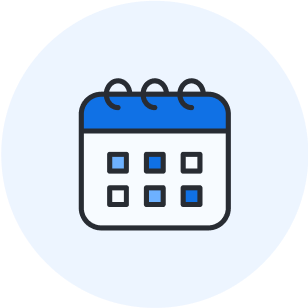
Course: Tips for productive 30-minute meetings
Learn how to facilitate effective meetings with this course.
Try it outSkill #2: Asynchronous collaboration
The most productive teams know how to collaborate both during and outside of meetings. That’s why asynchronous collaboration makes our list as one of the most important collaboration skills needed in today’s hybrid workforce (and no—we don’t mean just sending emails).
When teams practice async collaboration, they can reduce meeting fatigue, accommodate different collaboration styles and work settings, promote transparency, and increase efficiency.
Here’s how to improve this collaboration competency:
- Learn to recognize when you do and don’t need a meeting. To start, consider how urgent and complex the collaboration is. For instance, if you don’t need to make a decision ASAP and the topic isn’t overly complicated or new, you may not need the meeting. Next, determine the goals of the collaboration: Do you want to prioritize ideas? Get feedback on something? Share updates? We’ve found that many recurring meetings—like status updates and project check-ins—are best done asynchronously. Check out our full criteria (and flowchart) to decide if you need a meeting.
- Communicate clearly and explicitly. Whenever you are collaborating asynchronously, you’ll want to be clear on what actions are needed (if any) and by when. For example, instead of sending over a document to your collaborators saying you would love some feedback, communicate what specific part of the document you need feedback on, what date you need the feedback by, and why you are requesting their feedback.
- Provide context through visuals. Plain and simple: You will not be an effective asynchronous collaborator if you only use Slack and email to supplement or replace meetings. While these channels are great for quick questions or basic communication, they leave room for miscommunication and bury key context within conversation threads. Instead, use a visual format to convey information easily. This way, you can leave comments directly in context, show the relationship between ideas, and clarify any complex information without typing up endless paragraphs of text.

Asynchronous collaboration guide
Master asynchronous collaboration with tips from industry experts.
Read the guideSkill #3: Creating and maintaining documentation
Lucid’s survey shows that 30% of workers say they don’t know where to go for project resources. Why? Many organizations have a documentation problem. The bright side? You can get better at making and maintaining documentation.
Before you groan or exclaim how much extra work it is to create documentation, let’s clear something up: We’re not talking about traditional dry, static, text-heavy documentation. We’re talking about documentation that’s visual, dynamic, and practically maintains itself.
The goal of this skill is to share information to create alignment, reduce institutional knowledge, and speed up onboarding.
Here’s how to improve your documentation skills:
- Don’t save documentation for only technical systems or processes. Anything worth remembering, referencing, or revisiting can be considered documentation. This type of documentation—what we refer to as an innovation repository—includes ideas shared during a brainstorming session, team feedback on projects, or decisions made in a meeting. Check out these templates to get started.
- Document as you go, not as a separate step. Instead of treating documentation as a separate step after a collaborative activity, document as you work. You’ll do this naturally if you use a visual collaboration platform. For example, if you host a collaborative brainstorm on a visual canvas during a meeting, you’ll end up documenting all ideas, comments, and notes without any extra work. You can then share this document with anyone who may have missed the meeting to quickly get them up to speed.
- Centralize key resources. It’s not enough to just create the documentation—you must also store it in an easily accessible place. Try to centralize all key team documents—like process documentation, project boards, team guidelines, and more—in a shared space to help your team find the info they need.
- Create a maintenance plan. The documentation you create should change over time to grow with your business. When you document as you go, maintenance becomes much easier. However, you’ll still want to create a cadence for checking in with the team to talk through existing documentation, determine if it still serves the team’s needs, and make a plan to keep it, update it, or archive it.
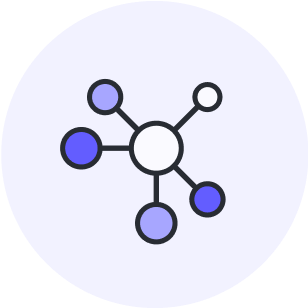
Documentation course
Learn how to create an innovation repository to centralize resources and coordinate progress.
Check it outSkill #4: Group decision-making
Making decisions is difficult enough, but group decisions can feel nearly impossible as you try to wrangle the right people to contribute and consider the many different opinions. There are complex dynamics at play, and it takes serious team collaboration skills to navigate these decisions.
With practice, however, you can learn how to capture diverse perspectives and make strategic group decisions relatively quickly.
Here’s how to improve this collaborative skill:
- Familiarize yourself with different techniques. To quickly get a pulse on how aligned you and your contributors are, you can try techniques like fist to five (where team members reveal a number of fingers to indicate their level of agreement) or dot voting (where participants allocate their “dots” to vote for their preferences). In Lucid, you can also use Visual Activities to survey team members' preferences and priorities.
- Create a safe space to share different or dissenting opinions. To avoid groupthink and facilitate creativity, you’ll need to help participants feel comfortable voicing dissent. You can encourage these types of discussions with techniques that intentionally challenge assumptions, like premortem brainstorming or ritual dissent workshops.
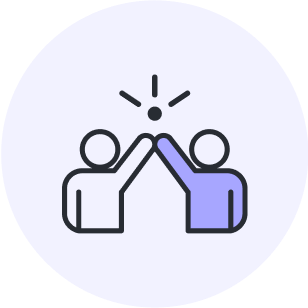
Strategic decision-making guide
Learn what frameworks, techniques, and tools can help you get better at making decisions.
Go nowSkill #5: Conflict resolution
Although instinct may be to uncomfortable situations like giving feedback or conflict, these situations can be incredibly beneficial in workplace collaboration. Conflict and feedback can build valuable trust between employees—but only if you are intentional in your approach.
The skill here isn’t in how to prevent conflict but in how to act and respond when it inevitably arises. That means knowing how to give uncomfortable feedback, listen to teammates, and work together to solve problems.
Here’s how to get better at this skill:
-
Create a team agreement around conflict. Knowing that you can’t avoid conflict, you can prepare for it by deciding as a team how you want to act and show up during conflict. You may agree to always ask questions and assume positive intent to encourage empathy and get to the root of the conflict. Document your conflict protocol in a shared space so everyone can reference it.
-
Do a retrospective after a conflict. Just like you’d do a retrospective after a large project, take some time to reflect on what happened in the conflict, what went well, and what could have gone better. In the spirit of continuous improvement, you may add anything to your team’s agreement on conflict so you all can continue to improve this skill.
-
Practice giving both constructive feedback and recognition. Regardless of what kind of feedback you’re giving, make sure you describe both the behavior you’re providing feedback on and the impact of the behavior. The more you give feedback, the more natural it will become—and your teammates will likely follow suit!

How to use conflict as a tool for growth
Learn how to navigate conflict confidently with tips to use before, during, and after conflict.
Learn moreSkill #6: Cross-functional collaboration
Nearly all projects require cross-functional collaboration, whether that’s keeping senior stakeholders in the loop or working closely with teams in different departments. This kind of collaboration is often more complex, with different teams having different goals, timelines, and background knowledge.
In hybrid work environments, staying in sync with cross-functional team members is even more challenging, and it takes time to refine this collaborative skill.
Here’s how to improve your cross-functional collaboration chops:
- Clarify roles, goals, and timelines. Take the time to understand the stakeholders' goals and customize what information you share and how you share it with each. It may be helpful to map out the workflows using swimlanes for processes or timelines to easily see who is involved at what stage in the project.
- Prioritize transparency. Give asynchronous updates frequently and try to centralize all key project information so everyone involved can access the most current info. Consider using visuals to create a shared language for communication. For example, by visualizing a complex architecture diagram, you’ll quickly align with your cross-functional team members, even those less (or more) technical than you.
- Intentionally build rapport. For some cross-functional groups that work together frequently, take the time to get to know each other and increase trust, such as through simple icebreakers at the beginning of recurring meetings.
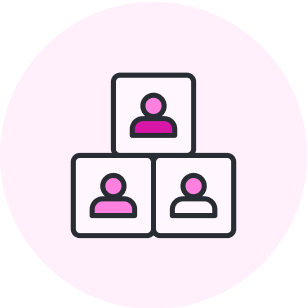
Guide to cross-functional collaboration
Get more tips on how to build your cross-functional collaboration skills.
Get the guideSkill #7: Using digital collaboration tools
Today’s teams need the right digital collaboration tools to stay aligned, share information, and work together efficiently. But learning new tools isn’t always easy, especially given that many teams today use five or more productivity tools at work.
Without proper training, these tools may do more harm than good in collaboration. Teams may use tools in ineffective ways (or not use them at all!). Even with the most user-friendly tools, many people could use some help to learn how to get the most value out of the tool.
Here’s how to improve (and help your team improve) this collaboration skill:
- Share resources and examples. If you’re a manager, take the time to enable your team with resources on how to use any new tools. Take advantage of courses or live training material that’s been prepared by the company that built the tool. Share any success stories you hear from other people using the tools to spark inspiration.
- Create team guidelines for using tools. You may create agreements for using certain tools, such as establishing Slack as a channel for simple updates and using a virtual whiteboard to take notes and record action items in a meeting. Experiment with your team on new ways to use different tools for different use cases.
- Create and use templates where it makes sense. Look for ready-made templates provided by the collaboration tool to make it easier to get started. If the tool allows you to create custom templates (like Lucid does), you can give your team a standardized way to dive into common use cases.

Explore Lucid Training Labs
Lucid is continually refreshing and creating new training content to help teams use Lucid effectively. Explore our self-serve courses and educational resources.
Check it outCollaboration takes both training and time to build the right skills—especially in hybrid environments. But it’s also more important than ever. High-value collaboration at work can separate the organizations that can adapt and innovate quickly from the ones that struggle to make decisions and move forward.
At Lucid, we know using the right tools is only half the battle. That’s why we’re continually prioritizing ways to help teams develop the right skill sets to collaborate more effectively. Check out our ever-growing library below to learn how to improve your collaboration skills.
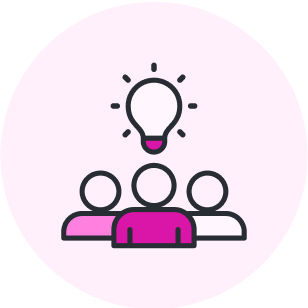
Ready to improve your collaboration skills?
Browse our full library of articles with expert tips to become a high-value collaborator.
Go nowAbout Lucid
Lucid Software is the leader in visual collaboration and work acceleration, helping teams see and build the future by turning ideas into reality. Its products include the Lucid Visual Collaboration Suite (Lucidchart and Lucidspark) and airfocus. The Lucid Visual Collaboration Suite, combined with powerful accelerators for business agility, cloud, and process transformation, empowers organizations to streamline work, foster alignment, and drive business transformation at scale. airfocus, an AI-powered product management and roadmapping platform, extends these capabilities by helping teams prioritize work, define product strategy, and align execution with business goals. The most used work acceleration platform by the Fortune 500, Lucid's solutions are trusted by more than 100 million users across enterprises worldwide, including Google, GE, and NBC Universal. Lucid partners with leaders such as Google, Atlassian, and Microsoft, and has received numerous awards for its products, growth, and workplace culture.
Related articles
Top meeting facilitation skills and techniques for more effective meetings
Explore expert tips and techniques for facilitating more effective, engaging meetings.
3 anti-patterns holding you back from better collaboration
If you’re feeling like collaboration is lacking on your team, approaching improvement by identifying and tackling anti-patterns can be a helpful framework.
6 practical tips for more efficient collaboration
Here are some tangible ways to increase the efficiency and effectiveness of your team's collaboration.
How to focus your team on high-value collaboration
When collaboration is flowing, it's exciting—but too often, teams approach collaboration without any strategy or purpose, and poor results follow. The key to working consistently well together? Focusing on high-value collaboration.
